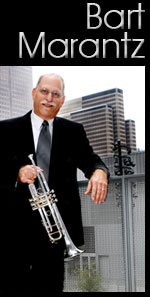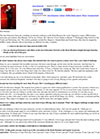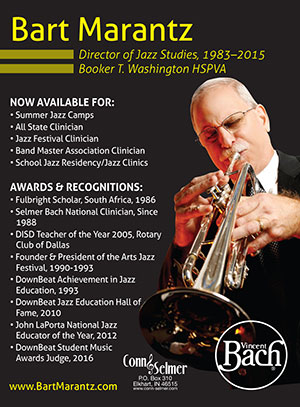 Home B.M.P. BTWHSPVA Articles Interviews Reviews Books Biography Videos Photos Calendar Music Links Contact Sara Marantz Matt Marantz Luke Marantz
Bart Marantz NPR/KERA Jazz Education Interview    Click below to listen to the interview  Click below to read the article 
|
Reviews "Joy Spring" By Clifford Brown Instrumentation: Combo Arranged by Clifford Brown/Transcription Recorded August 6, 1954 Publisher: Second Floor Music/Hal Leonard Grade: 5 1/2 Swing Tempo = 164 $20.00 There are a few in the history of our music who changed the way we approach this art form we call “jazz.” Clifford Brown is one of them and for anyone who plays jazz music you are most likely familiar which this great artist. Don Sickler, also a trumpet player, has taken a number of Blue Note classics from years past and transcribed them for all of us to enjoy as well as introduce our students to. “Joy Spring” is a must and should be in everyone’s small group book, but must be approached with a careful game plan or it will not be the experience you have envisioned for your students. First, find the original recording and allow your students to hear it and follow the chart as it’s being played. This arrangement is from the EmArcy recording # 1033 now available on CD #EmArcy 838306-2. If you have some sophisticated audio machines on your campus try slowing the recording down after listening to it at full speed. Assign your students a project of transcribing some of the solos on this recording (written and or played) and challenge them with these types of projects. You will find them growing at a much faster pace than if they just listen to the recording once or twice and then tried to play the music. Everything about this chart is demanding, but with a strong game plan of approach and execution the final results will be positive. Hold some rehearsals where you have the soloists work on the changes with just the rhythm section. Try recording the rhythm section on cassette and hand out copies to your soloists. Put the original CD on reserve in the listening library and allow the students to “live” the music again and again. “Joy Spring” is a must for all small groups. Nothing says your group has to burn this classic at quarter note equals 200. “Joy Spring” swings at any tempo and should be in your book now. Top note for trumpet F in the staff. Bart Marantz |


